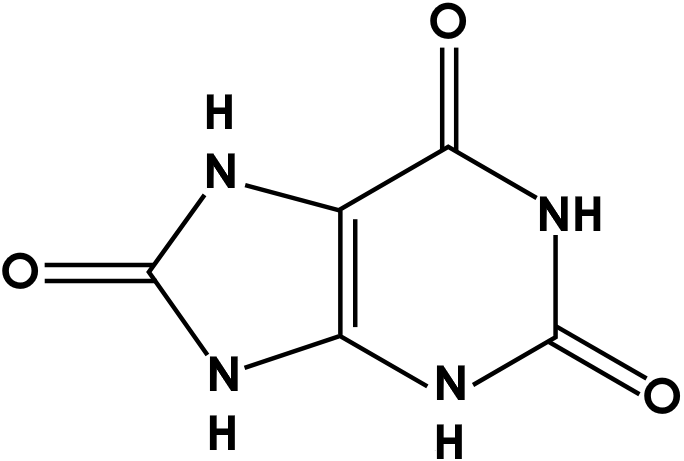
The major excretory product of birds is
a. Urea
b. Uric acid
c. Nitrates
d. Ammonia
Answer
589.5k+ views
Hint: The excretory product of birds is least toxic among the excretory products of other animals and in comparison to the other nitrogenous wastes, it requires a very little amount of water in excretion. This is also an adaptation for birds to minimize the water loss from their body.
Complete step-by-step solution:
In birds, reptiles, and most terrestrial arthropods, the toxic ammonia is converted to uric acid before being excreted and thus, these organisms are called uricotelic organisms. Mammals also form some uric acid during the breakdown of nucleic acids, in this case, the uric acid is excreted in the urine instead of in feces, and hence, the uric acid is considered as a major excretory product mainly in birds, reptiles and terrestrial arthropods.
Additional information:
Though the production of uric acid is energetically costly in comparison to processing of other nitrogenous wastes such as urea or ammonia because uric acid formation involves a complex metabolic pathway, it has been found advantageous to some terrestrial animals because it reduces water loss in excretion to a greater extent and in turn the organism’s need for water is also reduced. It should also be noted that uric acid is less toxic than ammonia and urea. Uric acid is formed from xanthine and hypoxanthine by the enzyme xanthine oxidase. Xanthine and hypoxanthine are produced from the other purines. The active site of xanthine oxidase enzyme consists of molybdenum, bound to sulfur and oxygen and it forms and releases uric acid in hypoxic conditions. The structure of uric acid has been given below –

So, the correct answer is ‘Uric acid’.
Note: Both proteins and nucleic acids contain nitrogen and during their catabolism, in the animal body nitrogen-containing macromolecules, oxygen, hydrogen, and carbon are released and stored in the form of carbohydrates and fats in different organs but the excess amount of nitrogen needs to be excreted from the body. This is because the nitrogenous wastes tend to form toxic ammonia in the body and may raise the pH of body fluids to a dangerous level. Many organisms use water to make ammonia dilute and release it out of the body while some others convert it into less toxic forms.
Complete step-by-step solution:
In birds, reptiles, and most terrestrial arthropods, the toxic ammonia is converted to uric acid before being excreted and thus, these organisms are called uricotelic organisms. Mammals also form some uric acid during the breakdown of nucleic acids, in this case, the uric acid is excreted in the urine instead of in feces, and hence, the uric acid is considered as a major excretory product mainly in birds, reptiles and terrestrial arthropods.
Additional information:
Though the production of uric acid is energetically costly in comparison to processing of other nitrogenous wastes such as urea or ammonia because uric acid formation involves a complex metabolic pathway, it has been found advantageous to some terrestrial animals because it reduces water loss in excretion to a greater extent and in turn the organism’s need for water is also reduced. It should also be noted that uric acid is less toxic than ammonia and urea. Uric acid is formed from xanthine and hypoxanthine by the enzyme xanthine oxidase. Xanthine and hypoxanthine are produced from the other purines. The active site of xanthine oxidase enzyme consists of molybdenum, bound to sulfur and oxygen and it forms and releases uric acid in hypoxic conditions. The structure of uric acid has been given below –

So, the correct answer is ‘Uric acid’.
Note: Both proteins and nucleic acids contain nitrogen and during their catabolism, in the animal body nitrogen-containing macromolecules, oxygen, hydrogen, and carbon are released and stored in the form of carbohydrates and fats in different organs but the excess amount of nitrogen needs to be excreted from the body. This is because the nitrogenous wastes tend to form toxic ammonia in the body and may raise the pH of body fluids to a dangerous level. Many organisms use water to make ammonia dilute and release it out of the body while some others convert it into less toxic forms.
Recently Updated Pages
What happens to glucose which enters nephron along class 10 biology CBSE

Write a dialogue with at least ten utterances between class 10 english CBSE

A circle is inscribed in an equilateral triangle and class 10 maths CBSE

When the JanmiKudian Act was passed that granted the class 10 social science CBSE

A sector containing an angle of 120 circ is cut off class 10 maths CBSE

The sum of digits of a two digit number is 13 If t-class-10-maths-ICSE

Trending doubts
The shortest day of the year in India

Why is there a time difference of about 5 hours between class 10 social science CBSE

Write a letter to the principal requesting him to grant class 10 english CBSE

What is the median of the first 10 natural numbers class 10 maths CBSE

The Equation xxx + 2 is Satisfied when x is Equal to Class 10 Maths

What is the missing number in the sequence 259142027 class 10 maths CBSE




